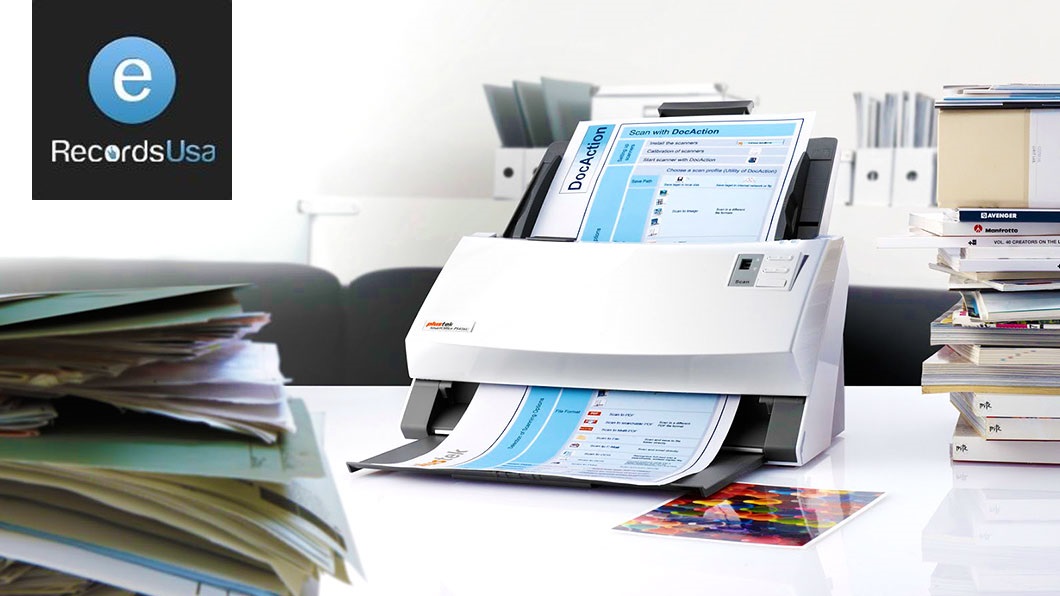Did you ever look up a news article in a 50-year-old newspaper to read what it said? Chances are you didn’t actually hold the paper in your hands. It would’ve have been far too fragile for that.
Instead, a librarian took you to a microfiche or microfilm reader, placed a card or roll of film into a reader, and showed you how to find the date, the section, and the article you were seeking.
This all happened because, 50 years ago, it was someone’s job to take photos of that newspaper and turn it into microfilm. The precarious nature of paper, which is so easily degraded and destroyed, necessitated that archivists find a better way of keeping permanent records.
The problem has become that microfilm isn’t eternal either. Microfilm is reported to have a life expectancy of 500 years. For it to achieve that noble length of useful life, it must be kept in a relatively pristine state, with no internal contaminants.
It also has to be free from fires and floods. These are conditions that obviously cannot be guaranteed. Therefore, because microfiche contains enormously important historical, financial, and legal data, safe and secure storage methods are needed. This is where the digitization of microfilm and microfiche becomes essential.
How Do You Digitize Microfilm and Microfiche?
Microfilm digitization requires special equipment. A Mekel professional production scanner is used for this purpose. This device is an extremely adaptable, High-Performance Microfilm scanning equipment.
Because microfilm and microfiche are already miniaturized, the information they hold is comparatively much greater than, for instance, an actual newspaper.
The scanners must be able to instantly read microscopically fine detail and do so without the need for adjustment or interference from the human programmer.
Microfilm digitization can be either positive or negative. For it to perform at a sufficiently rapid pace, the computer must automatically recognize and adapt to the form the microfilm takes beneath it.
Also, microfiche is not uniform or standardized in its formatting—sometimes presenting in a single row of emulsions and at other times in a double roll.
To adapt and capture the extreme amount of data present, the scanner, software and the PC must function together with seamless perfection.
The first thing we should note is that there is a wide variety of prices quoted for digitizing microfiche. To understand these variants, there are some important considerations to take into account.
Not All Microfiche Digitizers Are Created Equal
The description above—of camera and computer working effortlessly to deduce the type of film being digitized and capture it for digital storage—is actually a “best case” scenario. Such combination devices are costly.
Some mid-grade devices do a reasonably good job of preserving images on the microfilm, but they are much slower. There are also rudimentary machines that do a reasonably good job of capturing what’s on the film, but they are primarily manual, taking a single image at a time.
Operators who use this type of machine may charge less, but the turnaround for completed work may be much longer. The bottom line is that whenever you want microfiche digitized, you also want to ask what kind of machine will be used in the process.
Who Is Doing the Work and Where Are They Doing It?
Someone may do basic digitization of microfilm and microfiche with a rudimentary machine. This person likely will not be proficient in one of the upper-level systems.
The top of the line machines may seem to fly themselves, but someone has to take them off and land them, which requires training, experience, and skill.
More-advanced digitizing machines are so costly and the expertise to run them so exclusive that digitization through such a process may mean your microfiche cards and microfilm rolls will probably be sent off to undergo the process. This may still be faster overall than using a one screen at a time method.
However, one thing to remember is that the merchant on your end is probably a middleman, who will add a charge for making the arrangements and sending off the microfiche.
What Is a Reasonable Price to Pay?
It’s important to bear in mind that there are variables that have nothing to do with the elements we’ve discussed thus far. For instance, damaged or loose microfilm can present an issue that a merchant may need to add a fee to correct.
General Microfilm & Microfiche Scanning Price
- That said, a fair price to pay for scanning microfilm is probably around $50-85 a roll for 100’ rolls.
- Watch for 215’ rolls, which will double the price.
- Microfiche digitizing will run around $1.25-$1.30 per sheet for 16 and 35 mm fiche.
- Larger five-channel sheets for COM fiche, which carry around 300 images, will run about $3 per sheet.
- As far as an aperture card, digitizing that will run about $.75 a card.
These are only representative numbers, each project is unique and pricing will vary based on the requirements of the customer, amount of effort, condition & type of film, and amount of custom services.
To receive a free quote Call
+1.855.722.6669 or eMail us at
[email protected] now or eMail us
Here
eRecordsUSA – [Provider Of Best
Document scanning services in San Francisco] is specialized in providing
Aperture Card Scanning Digitization Services /
Photo album scanning services,
Slides & Negative scanning services/
Document scanning services. Would you like to receive a free quote to archive your historical, stored Aperture Cards/ films?
Call +1.510.900.8800
eRecordsUSA offer
Microfiche & Microfilm Scanning Services in following areas of California,
San Francisco, Mountain View, San Mateo, Santa Clara, Silicon Valley, Redwood City, Marin, San Jose, Sunnyvale, East Bay: Alameda, Hayward, Oakland, Pleasanton, Dublin, Concord, Contra Costa, Fremont, Milpitas, Livermore, San Ramon, Napa Valley: Petaluma, Santa Rosa, Solano, Sonoma, Fairfield,Vallejo, Pittsburg & Martinez.













